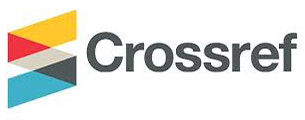Financial Literacy as A Character-Based Education for Students: A Bibliometric Analysis
Abstract
Full Text:
PDFReferences
Ansong, A., & Gyensare, M. A. (2012). Determinants of University Working-Students’ Financial Literacy at the University of Cape Coast, Ghana . International Journal of Business and Management, 126 - 133.
Ariaa, M., & Cuccurullo, C. (2017). Bibliometrix: An R-tool for Comprehensive Science Mapping. Journal of Informetrics, 959 - 975.
Atkinson, A., & Messy, F. A. (2012). Measuring Financial Literacy: Results of the OECD / International Network on Financial Education (INFE) Pilot Study. OECD Working Papers on Finance, Insurance and Private Pensions, No. 15. Paris: OECD Publishing.
Cole, S., Sampson, T., & Zia, B. (2011). Prices or Knowledge? What Drives Demand for Financial Services in Emerging Markets? The Journal of Finance, 1933 - 1967.
Donthu, N., Kumar, S., Mukherjee, D., Pandey, N., & Lim, W. M. (2021). How to conduct a bibliometric analysis: An overview and guidelines . Journal of Business Research , 285 - 296.
Fernandes, D., Lynch Jr., J. G., & Netemeyer, R. G. (2014). Finacial Litercy, Financial Education, and Downstream FInancial Behaviors. Management Science, 1861 - 1883.
LeBaron, Marks, A., D, L., Rosa, M, C., Hill, & Jeffrey, E. (2020). Can We Talk About Money? Financial Socialization Through Parent–Child Financial Discussion. EMERGING ADULTHOOD.
Lusardi, A. (2019). Financial Literacy and The Need for Financial Education: Evidence and Implications. Swiss Journal of Economics and Statistics, 1 - 8.
Lusardi, A., & Mitchell, O. S. (2014). The Economic Importance of Financial Literacy: Theory and Evidence. Journal of Economic Literature, 52(1), 5 - 44.
OECD. (2016). OECD/INFE International Survey of Adult Financial Literacy Competencies. Paris: OECD.
OECD. (2020). OECD Business and Finance Outlook 2020: Sustainable and Resilient Finance. Paris: OECD Publishing.
OECD. (2022). OECD/INFE Toolkit for Measuring Financial Literacy and Financial Inclusion 2022. Paris: OECD Publishing.
PERRY, V. G., & MORRIS, M. D. (2005). Who Is in Control? The Role of Self-Perception, Knowledge, and Income in Explaining Consumer Financial Behavior. The Journal of Consumer Affairs, 299-313.
Sherraden, M. S., & Ansong, D. (2016). Financial Literacy to Financial Capability: Building Financial Stability and Security. In International Handbook of Financial Literacy (pp. 83 - 96). St. Louis: Springer Science+Business Media Singapore.
Shim , S., Barber, B. L., Card, N. A., Xiao , J. J., & Serido, J. (2010). Financial Socialization of First-year College Students: The Roles of Parents, Work, and Education. Journal of Youth and Adolescence, 1457–1470.
Sundarasen, S., Rajagopalan, U., & Kanapathy, M. (2023). Women’s Financial Literacy: A Bibliometric Study on Current Research and Future Directions. Heliyon, 1-17.
Urban, C., Schmeiser, M., Collins, J. M., & Brown, A. (2020). The effects of high school personal financial education policies on financial behavior. Economics of Education Review, 1 - 12.
van Eck, N. J., & Waltman, L. (2014). Visualizing Bibliometric Networks. In Y. Ding, & R. Rousseau, Measuring Scholarly Impact: Method and Practice (pp. 285–320). Switzerland: Springer International Publishing.
Xiao, J. J., Chen, C., & Chen, F. (2014). Consumer Financial Capability and Financial. Social Indicators Research , 415–432.
Refbacks
- There are currently no refbacks.






